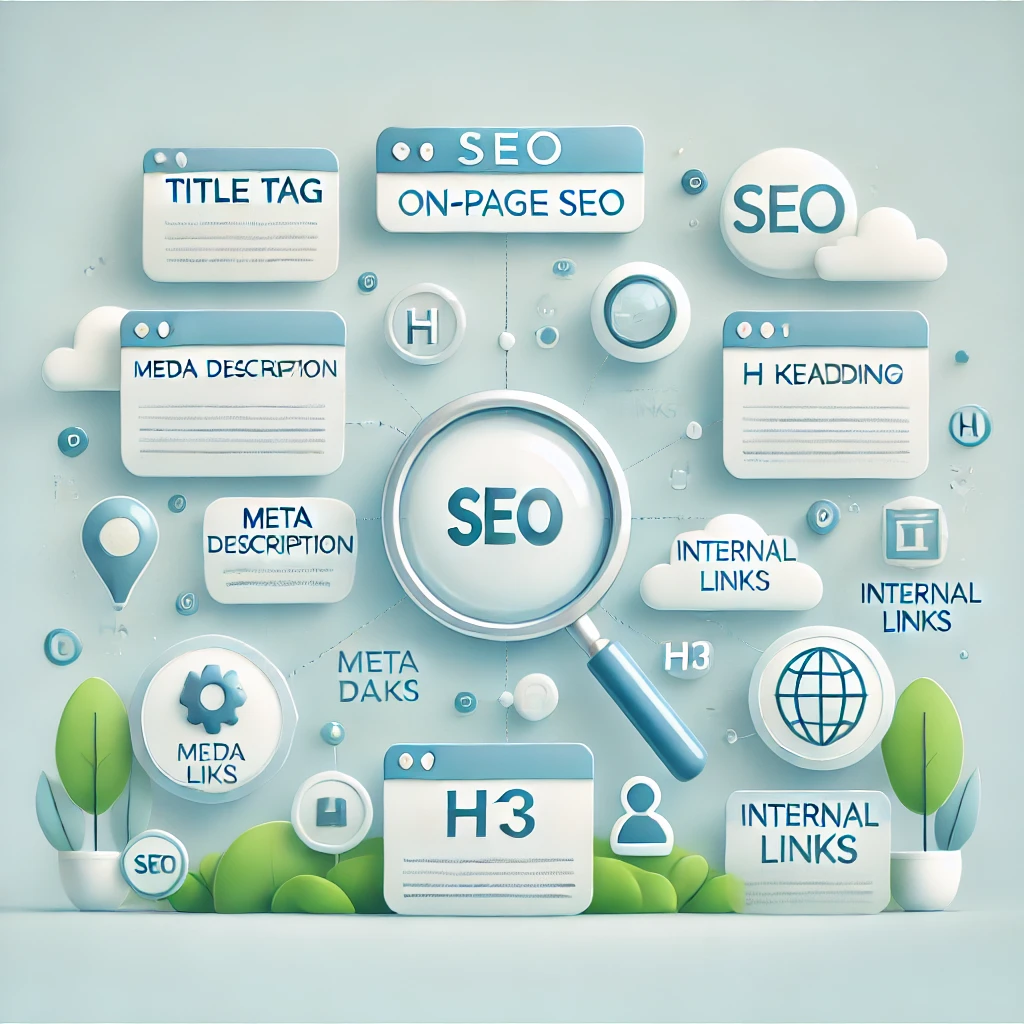Ultimate Guide to On-Page SEO for Beginners
What is On-Page SEO?
On-page SEO refers to all the things you can do on your website to improve its visibility on search engines like Google. It involves optimizing various elements on each page of your website, so search engines can easily understand what your content is about and show it to people who are searching for related information.
Why is On-Page SEO Important?
On-page SEO is crucial because it helps search engines understand your content, making it more likely that your site will rank higher in search results. Higher rankings mean more people will find your site, which can lead to more visitors, sales, and growth for your business.

Key Elements of On-Page SEO
- Title Tags
- The title tag is the headline of your page that appears in search engine results. It should be clear, concise, and include your main keyword. For example, if your page is about link building for ecommerce sites in Los Angeles, a good title could be “Effective Link Building Strategies for Ecommerce Sites in Los Angeles.”
- Meta Descriptions
- Meta descriptions are brief summaries of your page that appear below the title tag in search results. They should provide a compelling reason for users to click on your link. A good meta description might be, “Learn the best on-page SEO practices to boost your ecommerce site’s visibility and sales in Los Angeles.”
- Headings (H1, H2, H3)
- Headings help organize your content and make it easier for readers and search engines to understand. The H1 tag should be used for the main title of your page, while H2 and H3 tags can be used for subheadings.
- Keywords
- Keywords are the terms that people type into search engines. Including relevant keywords in your content, title tags, meta descriptions, and headings is essential. However, avoid “keyword stuffing,” which means overusing keywords, as it can harm your SEO.
- Content Quality
- Your content should be valuable, informative, and easy to read. It should address the needs and interests of your audience. High-quality content encourages visitors to stay on your page longer and engage with your site, which can positively impact your SEO.
- Internal Links
- Internal links are links that point to other pages on your website. They help search engines understand the structure of your site and can keep visitors on your site longer by guiding them to more relevant content.
- URL Structure
- Your page URLs should be simple, descriptive, and include your main keyword. For example, instead of using a URL like “www.yoursite.com/page1,” use something like “www.yoursite.com/on-page-seo-guide.”
- Images and Alt Text
- Images can make your content more engaging, but search engines can’t “see” them. Adding descriptive alt text to your images helps search engines understand what the images are about, which can improve your SEO.
- Mobile-Friendliness
- More people are using mobile devices to browse the internet, so your website must be mobile-friendly. A responsive design ensures your site looks and functions well on all devices, which can improve your rankings.
- Page Load Speed
- A fast-loading website provides a better user experience and can positively affect your SEO. Use tools like Google PageSpeed Insights to check and improve your site’s load time.
Conclusion
On-page SEO is a vital part of making your website visible to your target audience. By optimizing your title tags, meta descriptions, headings, content, and more, you can improve your site’s search engine rankings and attract more visitors. Start applying these on-page SEO tips to your website, and you’ll be on your way to better visibility and more traffic.
For expert help with SEO and link building, especially for ecommerce sites in Los Angeles, consider reaching out to professionals like New India Solutions. They specialize in creating strong backlinks and optimizing websites for better search engine performance.
